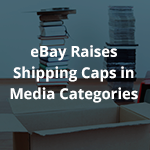 You would think product quality would be the far-and-away top customer concern, but did you know that shipping ranks right up there too? It is true. Studies have shown that, increasingly, shipping practices drive customer decisions – and therefore could very well be a deciding factor of how successful your e-commerce website will be.
You would think product quality would be the far-and-away top customer concern, but did you know that shipping ranks right up there too? It is true. Studies have shown that, increasingly, shipping practices drive customer decisions – and therefore could very well be a deciding factor of how successful your e-commerce website will be.
Make your shipping practices attractive to customers and manageable for your own bottom line by keeping the following tips in mind.
- Customers shouldn’t be required to log in to find shipping rates. Shipping rates shouldn’t be privileged information, and adding steps and requiring personal information will only annoy customers. Provide this information upfront, whether it’s a flat rate or dependent on weight and/or distance. Better yet, build a calculator (like AJAX) into your checkout page so it’s easy for shoppers to see their options by plugging in basic information.
- Shipping information should be visible on all product pages. A prominent shipping calculator or a tabbed view format make it easy for shoppers to calculate shipping as they shop. Customer satisfaction soars when this information is close at hand, and it encourages add-on purchases if they are trying to reach a minimum, or simply recognize value in larger purchases. In addition, having shipping information on all product pages keeps shoppers on those pages instead of having to track it down on other pages … where there’s nothing to buy!
- Work with your customers on lost packages. Packages can and do get lost in transit – and chances are, if it happens to you as a seller, it’s probably not your fault. However, consider how taking care of your customer trumps a small loss of revenue; if you can resolve the shipping issue yourself, it will likely pay off in a big way as you instill customer confidence and make a good name for your business.
- Free shipping makes sense – sometimes. Customers perceive value in free-shipping offers. Of course, “free” doesn’t always mean free – in order to stay profitable while offering free shipping, you’ll need to take a close look at your product prices. One way to get the most bang for your free-shipping buck is to examine your average order amount, then use free shipping as an incentive for customers to reach that magic number (for example, for orders over $45).
- Stay on top on shipments. A long lag time between placing an order and receiving shipping information can be frustrating for many shoppers – and sometime even open them to the possibility of canceling it altogether. Make sure to process and ship orders within 24 hours; by doing so, you’re telling the customer you value their business and interest in your product.
The Bottom Line
As an e-commerce seller, your goal is be profitable – and that happens when you have happy customers who return to your store and recommend it to others. Staying on top of shipping practices is one way you can show your customers you value their patronage and want to get your products into their hands as quickly and cost-efficiently as possible.






